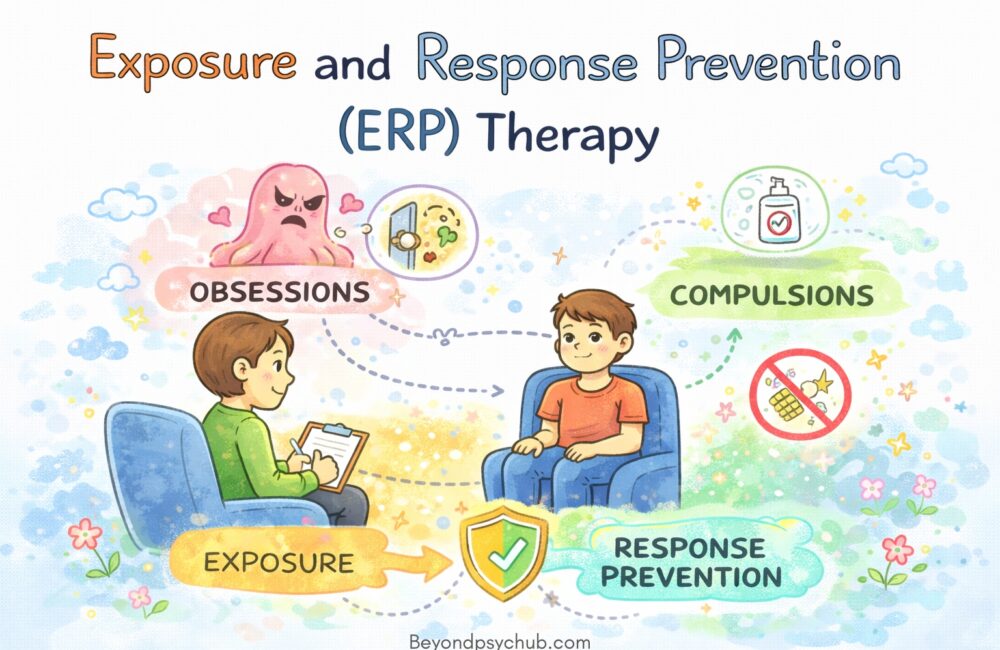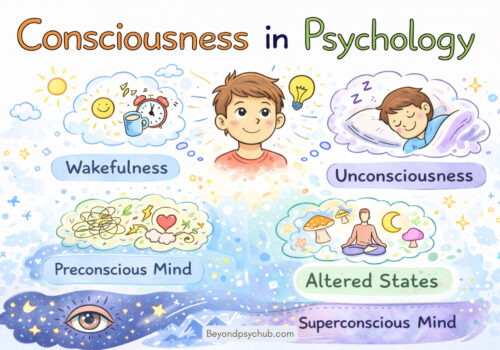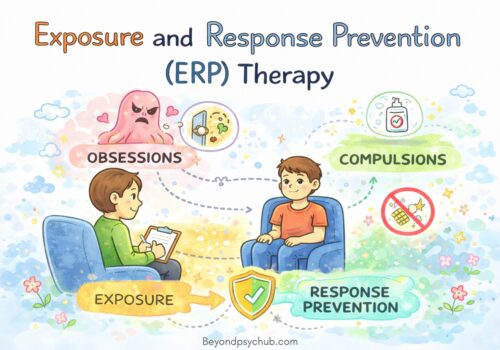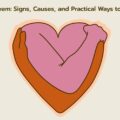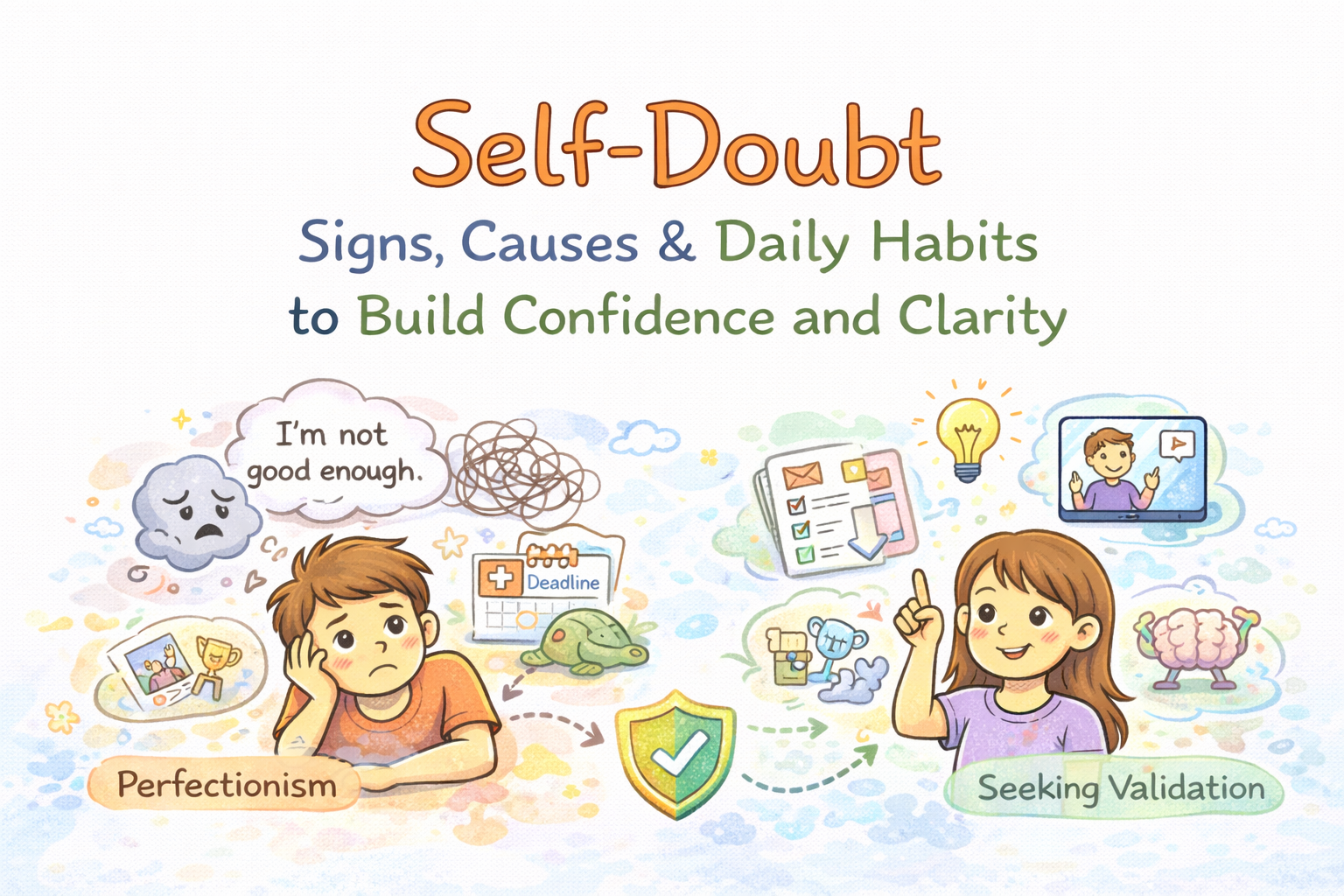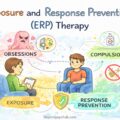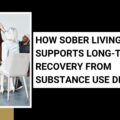Living with Obsessive-Compulsive Disorder (OCD) can feel like being trapped in a cycle of anxiety and ritual. From the constant urge to wash your hands, organize things every two minutes, or be annoyed by asymmetry can cause significant anxiety and irritation to people around you. While managing OCD is challenging, a highly effective, evidence-based treatment exists to help people regain control: Exposure and Response Prevention (ERP) therapy.
What Is Exposure and Response Prevention (ERP)?
Exposure and Response Prevention (ERP) is a type of therapy that helps individuals with OCD confront their anxiety and obsessive thoughts rather than trying to fight them.
The therapy has two core components:
- Exposure: You are gradually and systematically exposed to the objects, situations, or thoughts that trigger your anxiety. This is done in a hierarchical way, starting with triggers that cause a low level of anxiety and slowly progressing to more challenging ones.
- Response Prevention: While you are exposed to your trigger, you are coached to actively resist the urge to perform your compulsive rituals. By preventing the compulsive “response,” you learn that your feared outcomes do not happen and that your anxiety naturally decreases over time.
The goal of ERP therapy is to empower you with the coping skills that prevent them from being controlled by compulsion. In the beginning, ERP can be a challenge by exposing patients to their triggers, but that is only short term. Eventually, anxiety-filled situations cease to overwhelm OCD individuals, freeing them from the vicious cycle of obsessive and compulsive behaviour.
The Origins and Effectiveness of ERP Therapy
ERP is now a trending therapy worldwide, even becoming part of cognitive behavioural therapy (CBT) in countries like the UK. ERP’s origins trace back to the 1960s when behavioural psychologists began experimenting with exposure-based techniques to treat anxiety disorders. Initially developed by British psychologist Victor Meyer in the mid-1960s, ERP is based on the belief that repeatedly exposing a person to their fears decreases their anxiety over time. ERP includes two parts, both occurring simultaneously
- Exposure: Exposing a person to what they fear or are obsessed about
- Response: Preventing them from responding because of that fear. Usually, clients experience intense anxiety due to the stimulus.
Over the decades, research has consistently demonstrated the effectiveness of ERP in reducing symptoms of OCD and related anxiety disorders, solidifying its status as a gold-standard treatment.
Who Benefits from ERP?
ERP has been primarily created to treat obsessive-compulsive disorder (OCD). However, it can also be adapted for other anxiety disorders such as specific phobias, social anxiety disorder, and panic disorder. Individuals experiencing intrusive thoughts, compulsive rituals, or overwhelming anxiety that interferes with their daily functioning may benefit from ERP. While it is mostly associated with adults, ERP can also be tailored to suit the needs of children and adolescents, making it a versatile and widely applicable therapeutic approach. Here are some criteria that make a patient eligible for ERP.
- Fear of germs or contamination
- Fear of losing control or harming others
- Intrusive thoughts that disrupt daily function
- Obsessive thoughts about rituals or religion
- Hoarding or fear of losing things
Exhibiting such obsessions impacts one’s quality of life, and therapy is essential to help a person get back on track. Usually, OCD individuals treated through ERP see improvement and, when combined with medication, have a high chance of being cured successfully. ERP can be defined as the cornerstone of OCD treatment, where patients gain valuable coping tools to address their symptoms. Exposure and response prevention can make a significant positive impact on the lives of individuals with OCD. In more severe cases, ERP becomes a part of a broad spectrum of therapy, which can include other treatments, such as CBT for anxiety.
ERP is More Successful Than Psychotherapy
Psychotherapy, also known as “Talk Therapy”, is not very practical for OCD. In psychotherapy, patients are encouraged to talk about their condition to gain insights that help them understand how to manage it. While talk therapy is ok in other conditions, no research to date has found it beneficial for OCD. Now, ERP combined with medication has been proven by several studies to be highly effective for OCD.
How Does Exposure Therapy Work for OCD?
Exposure and response prevention (ERP) usually begins in a clinical setting, wherein the therapist learns about the patient’s symptoms and creates a treatment plan.
1. Assessment and Goal Setting
The therapist assesses the patient, working collaboratively to identify specific triggers, obsessions, and compulsions that contribute to their anxiety. They establish clear treatment goals and develop a tailored ERP plan to address the individual’s unique challenges.
2. Psychoeducation
The therapist then helps the individual to understand the underlying mechanisms of their anxiety and how ERP can help. The patient will be educated about OCD, its patterns, the cycle of obsessions and compulsions and how avoidance perpetuates the problem. By gaining insight into their condition, individuals become better equipped to engage in ERP with confidence and commitment.
3. Creating a Hierarchy
An essential stage of ERP is creating a hierarchy of triggers and feared situations. The hierarchy will consist of fearful stimuli ranked from least to most anxiety-provoking. This hierarchy serves as a roadmap for exposure exercises, allowing individuals to confront their fears systematically and sustainably gradually. Starting with less intimidating situations increases patients’ confidence in tackling more challenging ones.
4. Exposure Exercises
Once the preliminary insight stages are complete, that patient is encouraged to envision their fears on their own or in the therapist’s presence. This exposure can take various forms, including imaginal exposure (mentally visualizing feared scenarios), in vivo exposure (directly confronting real-life situations), or interoceptive exposure (experiencing bodily sensations associated with anxiety). It is the responsibility of the patient to try and avoid compulsive and ritualistic behaviour as much as possible. This is a critical stage in ERP for OCD. Throughout these exercises, individuals are encouraged to resist the urge to engage in compulsive rituals or avoidance behaviours.
5. Response Prevention
Response prevention is critical to ERP. It involves breaking the cycle of obsession-compulsion to reduce anxiety over time. This helps reduce or stop the rituals and weakens the association between triggers and stress, leading to less distress and an increased tolerance for uncertainty. Once patients find they can handle the exposure situations themselves, the therapist might prescribe ERP exercises to perform at home.
6. Gradual Exposure and Habituation
Throughout exposure and response prevention therapy, OCD individuals will continuously face elevated stimuli challenging their responses. This helps them get used to their fears, leading to more tolerable behaviour and reduced anxiety over time. The entire process of ERP up to the most challenging levels will promote adaptive coping strategies, fostering resilience in a patient to tackle their OCD.
7. Maintenance and Relapse Prevention
Relapse prevention is the final stage of ERP, with Individuals learning strategies to manage setbacks and coping with residual anxiety without resorting to compulsive behaviours. Regular follow-up sessions and ongoing support from the therapist help reinforce learned skills, prevent symptoms from returning and ensure long-term success.
Exposure and Response Prevention (ERP) undoubtedly stands as a beacon of hope for individuals challenged by OCD and the anxiety that stems from it. By confronting fears head-on and breaking free from the grip of compulsive rituals, individuals can reclaim their lives and experience newfound freedom from anxiety. ERP offers a path to permanent change, strengthening individuals and helping them regain their quality of life.


